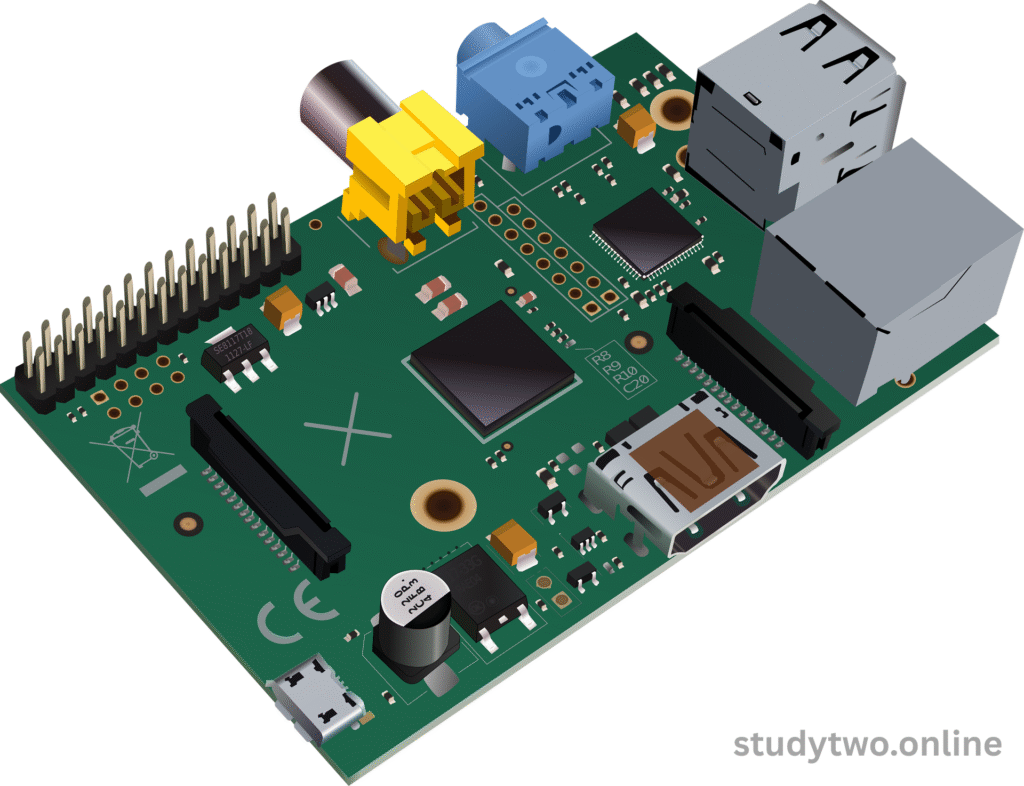In today’s fast-paced world, businesses across industries are seeking ways to optimize operations, reduce costs, and accelerate innovation. Single source technologies have emerged as a powerful solution, enabling organizations to streamline processes by consolidating multiple functions into a unified platform or provider. From manufacturing to healthcare and IT, single source technologies are transforming how industries operate. This blog article discusses the idea of single source technologies, their advantages, uses, and future opportunities, tailored to SEO to target business leaders, technology enthusiasts, and business professionals looking for innovative solutions.

What Are Single Source Technologies?
Single source technologies are integrated systems, platforms, or providers that provide several functionalities or services from a solitary point of contact. In contrast to conventional methods dependent on various vendors or different systems, single source technologies bring together resources, data, or processes into one combined solution. The method reduces complexity, optimizes efficiency, and guarantees unbroken interoperability.
For instance, in manufacturing, a single source technology supplier may provide all the components, software, and services for one production line. In IT, a single source platform may manage cloud computing, cybersecurity, and data analytics within a single ecosystem. The objective is to streamline workflows, minimize dependencies, and optimize operational excellence.
Why Single Source Technologies Are Important
-
Efficiency: Avoids the necessity of dealing with multiple vendors or systems.
-
Cost Savings: Minimizes overhead and integration costs.
-
Innovation: Facilitates quicker implementation of cutting-edge technologies such as AI and IoT.
As companies are under greater pressure to innovate, single source technologies provide a strategic benefit.
Key Benefits of Single Source Technologies
1. Comprehensive Integration
Single source solutions bring together several capabilities into one provider or platform:
-
Hardware and Software: In industry, vendors such as Siemens provide end-to-end automation systems with hardware, software, and analytics.
-
End-to-End Services: IT companies such as IBM deliver cloud, security, and AI services under one contract.
-
Data Unification: Health systems such as Epic Systems bring together patient records, billing, and analytics.
The integration provides compatibility and minimizes friction between pieces.
2. Scalability
Single source technologies are built to scale with businesses:
-
Modular Systems: Enable companies to add capabilities as requirements change.
-
Cloud-Based Solutions: Dynamically scale computing resources, such as with AWS or Microsoft Azure.
-
Customizable Workflows: Easily fit to unique industry needs, e.g., FDA compliance in healthcare.
Scalability allows for long-term sustainability and cost-effectiveness.
3. Centralized Management
One point of contact makes management easy:
-
Unified Dashboards: Track performance, security, and analytics in a single interface.
-
Streamlined Support: Single provider addresses troubleshooting and updates.
-
Less Training: Employees are trained on a single system, conserving time and resources.
Unified management improves operational visibility and responsibility.
4. Improved Security
Through bundling services, single source technologies minimize risks:
-
Fewer Access Points: Reduce exposure to cyber attacks.
-
Standardized Protocols: Maintain uniform security controls across functions.
-
Proactive Monitoring: Providers such as Cisco provide integrated security packages with real-time threat detection.
This is essential in sectors such as finance and healthcare, where data breaches are expensive.
5. Cost Savings
Single source solutions reduce total cost of ownership:
-
Bundled Pricing: Saves cost over multiple vendors.
-
Fewer Integration Costs: Does not require custom middleware.
-
Predictable Budgeting: Fixed contracts ease planning.
A study at Tufts University identifies that manufacturing single source providers can cut cost by simplifying processes such as tandem manufacturing steps.
Advantages of Single Source Technologies
1. Simplified Operations
By unifying functions, organizations reduce redundancies and enhance processes:
-
Manufacturing: Individual source automation systems eliminate downtime and increase production efficiency.
-
Healthcare: Combined platforms enhance patient care coordination and minimize administrative errors.
-
IT: Single source cloud solutions make it easier to manage infrastructure.
2. Time-to-Market Acceleration
Single source technologies speed up innovation:
-
Rapid Deployment: Pre-integrated systems lower setup time.
-
Agile Development: Platforms such as Salesforce facilitate rapid app development within a single environment.
-
Prototyping: Manufacturers can expedite testing of new products with end-to-end solutions.
3. Enhanced Collaboration
Converged platforms enable collaboration:
-
Shared Data: Real-time insights are accessible to teams, improving decision-making.
-
Cross-Functional Tools: Platforms, such as Microsoft Teams, bring together communication, project management, and analytics.
-
Vendor Alignment: One provider promotes consistent goals and deliverables.
4. Better Customer Experience
Single source technologies provide seamless services:
-
Personalized Solutions: Retail platforms such as Shopify Plus bring together e-commerce, payments, and marketing.
-
Consistent Support: Customers deal with one provider, reducing satisfaction.
-
Reliable Performance: Unified systems reduce disruptions.
5. Sustainability
By streamlining resources, single source technologies enable green practices:
-
Energy Efficiency: Integrated systems minimize the use of power.
-
Waste Reduction: Streamlined manufacturing helps reduce material waste.
-
Green Tech Integration: Companies such as Schneider Electric provide green automation solutions.
Uses of Single Source Technologies
1. Manufacturing
-
Automation Systems: Companies such as Rockwell Automation supply integrated control systems, sensors, and analytics.
-
Supply Chain Management: Single source vendors enable streamlined procurement, production, and distribution.
-
Additive Manufacturing: 3D printing platforms integrate design, materials, and printing in a single solution.
2. Healthcare
-
Electronic Health Records (EHR): Epic and Cerner provide integrated platforms for patient information, billing, and scheduling.
-
Telehealth: Single source solutions combine video consultations, diagnostics, and records.
-
Medical Devices: Providers such as Medtronic provide integrated imaging and monitoring systems.
3. Information Technology
-
Cloud Platforms: AWS, Azure, and Google Cloud offer computing, storage, and AI services.
-
Cybersecurity: Palo Alto Networks provides end-to-end security suites.
-
DevOps: GitLab combines coding, testing, and deployment.
4. Retail and E-Commerce
-
Unified Commerce: Shopify and BigCommerce unify storefronts, payments, and inventory.
-
Customer Analytics: Single source platforms monitor user behavior by channel.
-
Logistics: ShipBob solutions combine warehousing, shipping, and tracking.
5. Defense and Aerospace
-
Integrated Systems: Lockheed Martin delivers single source solutions for radar, communications, and control systems.
-
Supply Chain: Consolidated suppliers provide secure and reliable component supply.
-
Simulation: Such platforms as Boeing’s provide integrated training and test environments.
Limitations of Single Source Technologies
Though potent, single source technologies possess potential limitations:
-
Vendor Lock-In: Single sourcing may constrain flexibility.
-
Single Point of Failure: System failure can halt operations.
-
Customization Limits: Certain solutions lack complete fit for niche requirements.
In order to guard against these, companies should engage flexible contracts and provide strong service-level agreements (SLAs).
How to Adopt Single Source Technologies
1. Assess Your Needs
-
Identify issues such as dispersed systems or high vendor expenses.
-
Define objectives, such as enhancing efficiency or decreasing time-to-market.
-
Map functionalities needed to a single source solution.
2. Research Providers
-
Compare platforms such as AWS vs. Azure for IT or Siemens vs. Rockwell for manufacturing.
-
Assess scalability, security, and support options.
-
Consult case studies or reviews on sites such as Gartner or Capterra.
3. Pilot and Test
-
Begin with a small-scale deployment to prove performance.
-
Test integration with current systems to confirm compatibility.
-
Collect feedback from stakeholders to fine-tune implementation.
4. Train Your Team
-
Deliver training on the new platform to drive adoption.
-
Use provider resources, i.e., tutorials or certifications.
-
Encourage a culture of ongoing learning to maintain up-to-date skills.
5. Monitor and Optimize
-
Utilize analytics to measure performance and ROI.
-
Regularly schedule check-ins with the provider to fix problems.
-
Be aware of updates to take advantage of new capabilities.
Conclusion
Single source technologies are transforming industries by eliminating complexities, cutting costs, and driving faster innovation. From manufacturing through healthcare to IT, integrated solutions deliver scalability, security, and efficiency that make them a strategic preference for contemporary businesses. Through the deployment of single source technologies with care, organizations can remain competitive.
